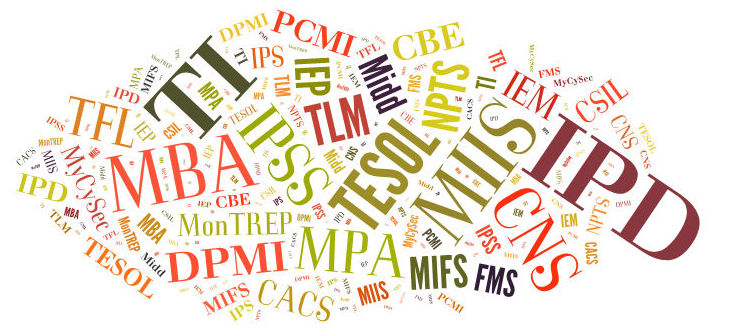Most Practical Abbreviations and Acronyms

What’s the difference between an acronym and an abbreviation?
Many people feel they have the same meaning, but traditionally there is a difference:
An acronym is a word that is made by taking the first letter of the full name or sentence. For example, there is a famous Swedish furniture company is called IKEA. It is the short form of for Ingvar Kamprad Elmtaryd Agunnaryd. The company name is called IKEA; it is read like any other word. It is never spelled out letter by letter: I – K- E- A.
An abbreviation is used by taking the first letter of a longer sentence. Each letter is spelled out and not read as a word. Two examples are BBC (British Broadcasting Corporation) and CNN (Cable News Network)
Here are ten examples of common acronyms and abbreviations:
R.S.V.P.
“Répondez s’il vous plaît”, a French phrase that translates to “please respond” or literally “respond, if you please”. It is used on invitation cards. When you receive an RSVP, you must reply to the invitation saying whether you accept or decline the invitation.
ESL / EFL
Both of these abbreviations have the same meaning and are very common to see for learners of English
ESL means English as a second language. – It is mostly used in American English
EFL means English as a foreign language. – It is mostly used in British English
Neither of them needs to use a full-stop in between the letters -it is EFL, not E.F.L
Note: On the same subject we use ESOL (English for speakers of other languages) and TESOL (Teaching English to speakers of other languages
P.M. / A.M.
Both of these are used when telling the time:
P.M. – Also written as p.m. and pm, it stands for “post meridiem” (Latin for “afternoon” in the 12-hour clock)
A.M. – Also written as a.m. and am, it stands for “ante meridiem” (“before noon”)
AD / BC
BC (or B.C) stands for “before Christ
AD (or A.D) stands for “Anno Domini” (Latin for “In the year of Our Lord”)
ASAP
ASAP (or A.S.A.P.) stands for “as soon as possible”. We use this abbreviation when we want someone to do something quickly: “Send me the report ASAP.

DIY
DIY (or D.I.Y) stands for “do it yourself”. The term used by various communities that focus on people (called ‘do-it-yourselfers’ or ‘DIYers’) creating or repairing things for themselves without the help of paid professionals.
B.Y.O.B.
B.Y.O.B. or (BYOB) is often seen on invites to parties. It stands for “bring your own bottle/booze”; you are invited to a party, but you should bring your own drinks.
ETA
ETA (not E.T.A) stands for “estimated time of arrival”. It is the time when a form of transport (like a train or plane) is expected to arrive in a place. The opposite is ETD (“estimated time of departure”)
P.S.
.P.S (or PS) stand for “Post Script” and is used at the end of written letters to add extra information
I.e. / E.g.
These two abbreviations are easily confused and both used when writing:









👌👏